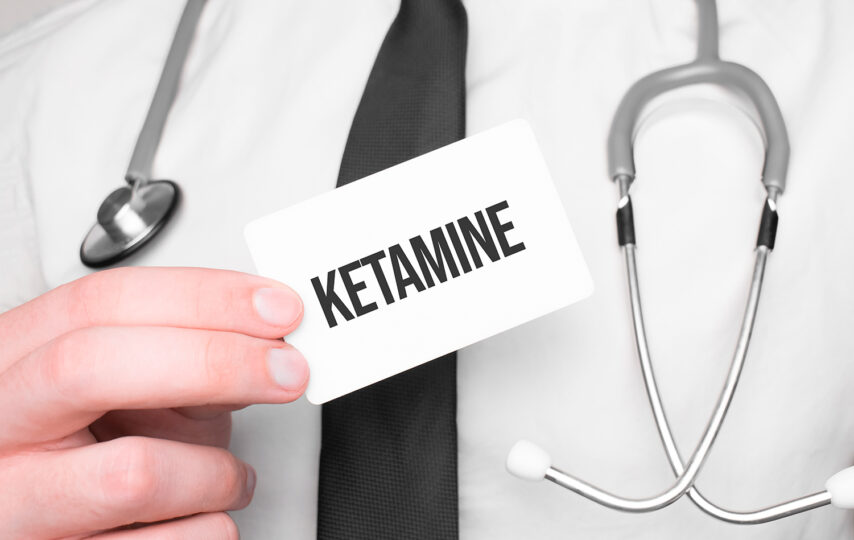What is Ketamine?
Ketamine belongs to the group of anesthetics. Ketamine is a sedative that is popular for its use as a local anesthesia.
Ketamine has been known since the 1970s, the active ingredient used in the form of ketamine hydrochloride causes sleep and insensitivity to pain, while the protective reflexes are retained.
This means that ventilation is not necessary during treatment.
For this reason, ketamines are among the ideal anesthetics in the emergency room.
It can also be used for local anesthetics, such as ketamine can be used on all nerves, whether on the spinal cord or the peripheral nerves.
It is available as a solution for injection in ampoules and is injected intramuscularly or intravenously.
How does Ketamine work as Anesthetic?
Ketamine contains active ingredients such as sodium chloride, benzethonium chloride, hydrochloric acid, and others.
It unfolds its effect in the central nervous system and sets a physical reaction in motion in connection with other endogenous messenger substances.
The cardiovascular system is thus stimulated and the volume of the heart increases.
Heartbeat and pulse rate also increases and the pressure in the veins and arteries can increase as well.
The central nervous system is overstimulated, which triggers amnesia.
This means that the patient lacks temporal memory.
The effect on the decentralized nervous system can be different depending on the indivisual.
Ketamine can thus improve mood and help with anxiety, pain and depression, says Findketamine.
Does ketamines work like Phencyclidine?
The active ingredient can be highly psychologically dependent. After taking it several times, tolerance quickly develops, which increases the dosage.
Ketamine should therefore only be administered with great caution by the doctor.
The active ingredient was also known in the past as the club drug, but the active ingredients are better explored now for correctional treatment rather than just a recreational drug.
When can Ketamine be used as an Anesthetic?
- Pulse oximetry
Ketamine is used by the dentist during an operation under anesthesia.
Such innovative anesthesia procedures and deep sleep treatment methods make it possible to carry out a complicated procedure for the patient without fear and stress in modern dental practice.
The procedure is suitable, for example, for immediate implants, in which the tooth is pulled in one session, the implant is inserted and a dental prosthesis is provided.
- Supplementary use in deep sleep treatment
In dental practice, various methods and drugs are offered for treatment in deep sleep with a sedative.
A sedative is used for a so-called dream sleep treatment.
The intravenous administration of the sedative guarantees the patient an immediate effect and a deep relaxation phase during the treatment, during which the vital signs and body functions of the patient are constantly monitored.
If contrary to expectations, the dental treatment should take longer and the effect of the sedative flattened out significantly, the sedative ketamine is used to continue the deep sleep treatment.
It is administered intravenously to the patient successively. The effect then lasts for 5 to 10 minutes.
This procedure is particularly common for long-term oral surgery.
Ketamine is therefore so well suited for the combination with a sedative because it extends or strengthens its pharmacodynamic effect.
- Depression management
Research has shown that ketamine could be used as a positive alternative therapy in depressed patients for whom traditional antidepressants do not work.
This would have the advantage that it is the only anesthetic that can switch off consciousness but does not interrupt breathing.
For widespread use in the psychiatric area, more extensive studies and long-term data are required to test the exact effect as well as interactions with other drugs and side effects.
- How can Ketamine be Administered?
As a rule, the administration of one quarter of the bodyweight is recommended as a sedative, which corresponds to an ampoule of 2ml ketamine S/ml for a weight of 80 kg for example.
In general, the sedative must not be mixed directly with another sedative, as this can lead to precipitation reactions.
This means that both drugs are not administered at the same time, therefore, ketamine should only be used at a time.
Before using ketamine as a sedative, you should have fasted for at least 3 to 5 hours, but you can take water.
In addition to intravenous and intramuscular injection, hetamine can also be administered orally. This is used for medical anesthesia.
How Should Ketamine be stored?
The active ingredient is only available on prescription but does not fall under the Narcotics Act.
In ampoules, it is intended for single use. The remaining amounts should not be used.
The solution must be clear and colorless. After opening, injection solutions can be stored in the refrigerator at 2 degrees Celsius and can thus be used for up to seven days.
Ampoules and injection bottles should not be stored below 0 degrees Celsius because of the risk of breakage.
Unused drugs or packaging material must be disposed of under national regulations.
When can you avoid Ketamine?
Ketamine is not advisable to be used in the following conditions.
- When a patient is hypersensitive to any of the active ingredient in ketamine. This is one of the reasons it should be administered by a medical doctor so that you health record must have been taken beforehand.
- A patient suffering from high blood pressure or increased intracranial pressure.
- During pregnancy
- When a patient has a severe mental disorder
- When a patient has high intraocular pressure
Adequate and continuous monitoring of the patient should also be done, a pulse oximeter should always be used on the patientsto ensure everything is under control until the patient is discharged from the clinic.
Veterinary Anesthesia inhalation solutions can increase safety during surgery by measuring the exact amounts to dispense based on size, weight, and biology.
Are there side effects of Ketamin?
Despite the reserved protective reflexes, the penetration of fluid or other substance form into the respiratory tract cannot be avoided all the time.
Although it is generally a well-tolerated drug when used as an anesthetic and analgesic, it has side effects that you, the patient, should be aware of.
The active ingredient stimulates saliva production and can lead to digestive disorders in sensitive people.
As the salivation is increased, atropine should be used as a preventive measure.
In combination with sleeping pills, especially neuroleptics or benzodiazepines, when used as a sedative, the undesirable side effects are weakened, but the duration of action is also prolonged.
There is also a possible side effect of an increase in heart rate and blood pressure.
This also applies to the narrowing of the airways and visual or movement disorders.
Severe hypersensitivity reactions or cardiac arrhythmias are very rare.
If the ketamine-containing drug is injected too quickly, it can lead to respiratory depression.
A psychologically unpleasant side effect is the hallucinogenic property of the active ingredient in higher doses.
If it is necessary to use higher doses as part of the treatment, a combination with a hypnotic is recommended.
This ensures protection against the so-called psychotropic side effects (pseudo-hallucinations).
Risks of Abuse
If the active ingredient is misused as a drug instead of an anesthetic, there is a high risk that the described side effects will occur in massive form and lead to serious damage to health and even death, especially when the drug is being injected.
Another great risk lies in the addictive potential of ketamine when taken regularly, as the body demands ever-higher doses for the desired effect to occur.
This constant consumption in turn leads to a sharp increase in side effects and even death.



